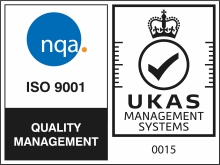
We use our hands for just about any job, and so preventing hand injuries in the workplace should be a top priority for every business.
Providing the proper safety precautions have been followed, most hand injuries are avoidable. But, sadly, they are still all too common in the workplace.
Hand injuries cost businesses dearly, both directly in terms of potential compensation, medical bills and workflow disruption, and indirectly by lowered employee morale.
In this blog, we look at how businesses can protect their employees – and themselves – from hand injuries and their repercussions by engaging in some simple preventative measures.
Carry out a risk assessment
The first step to preventing hand injuries is to identify and assess any hazards in the workplace. Risk assessments should be carried out regularly to consider any new hand safety hazards that may arise as the workplace changes.
To identify risks, look back through injury reports to see how workers may have injured their hands in the past. Ask employees for feedback on any hazards they see that could be reduced or removed. Speak to other people in your industry and read articles about hand safety risks, in a variety of industries.
Use a risk assessment table to categorise each of the hazards you find into ‘low’, ‘moderate’, ‘high’ or ‘extreme’, according to the level of risk it poses to your employees. Consider what actions you could take to eliminate or reduce each risk, no matter how small it may seem to be.
Conduct regular staff training
Effective staff training is essential to ensure a safer workplace. In order to keep hand safety at the forefront of everyone’s minds, schedule monthly safety talks and engage in more frequent but shorter protocol reminders to reinforce the message.
Don’t shy away from emphasising the seriousness of the dangers your employees face. You need to ensure your hand protection training resonates with your employees so they remember the potentially serious consequences of not following proper safety protocols.
Ask different staff members to run the training sessions each time or otherwise contribute to safety memos. As well as being a good way to engage your workforce, this will help the selected people to take ownership of safety and encourage them to enforce it during regular work hours. They will know the safety information well, and will feel good about teaching others and contributing to improving their work environment.
Provide quality tools and safety equipment
A vital part of providing a safe and comfortable working environment for your employees is to ensure the tools they use are of high-quality, reliable and adequate for the purposes they are being used for. Well-designed tools reduce the risk of hand injuries, because they require less user effort. Using excessive force with tools can result in slips that can cause serious injury. Ergonomically-designed tools will also reduce tendon and muscle strain, reducing finger, wrist, hand and arm fatigue when performing repetitive tasks. Each worker should wear the appropriate safety clothing for the tool they are using, and this safety clothing should fit them properly, as ill-fitted safety equipment can be less effective and potentially cause injuries in itself.
Companies should regularly inspect all tools and machines that put employees at risk of sustaining a hand injury, and immediately replace any equipment or safety clothing that is found to be in poor working order. A no-tolerance policy should be in place to dissuade employees from using worn or ill-functioning equipment, neglecting to wear protective equipment, or failing to comply with safety protocols.
Cross-train employees
Even with the most rigorous risk assessments in place, sufficient training for employees and the very best tools and safety equipment, hand and finger injuries can still happen in the workplace. Human error caused by carelessness, fatigue, distractions or boredom is much harder to eradicate, and can be a cause of injuries.
In order to guard against these human factors, keep your employees engaged and alert by training them to do a number of tasks and rotating them around different duties during the working day. As well as helping to keep boredom at bay, this will reduce the likelihood of repetitive strain injuries and muscle fatigue by varying movement patterns and muscle usage.
iSB Group: part of the solution
At iSB Group, we aim to provide our customers with quality tools and highly-rated safety and personal protective equipment that will help them to prevent workplace accidents, including hand injuries.
In this role, we have chosen to become UK’s preferred distributor for Slice®, providers of a wide range of cutting tools.
Slice® products offer a safer cutting experience. The company’s advanced ceramic blades are perfect for the job but are safe to the touch, eliminating the potential for accidental workplace injuries. Thanks to the beneficial properties of the 100% zirconium oxide from which they are made, Slice® blades are suitable for use across most industries and in a wide range of applications.
For more information on the range of Slice® tools we offer, and their safety credentials, call us on +44 (0) 121 749 4433 or email sales@isb-group.com
You Might Like...
 1
1
Gravity Jupiter Safety Trainers- E3200
Ultra resistant textile TECNO-TEXT upper
 2
2
Gravity Jupiter Safety Trainers- E3200
Ultra resistant textile TECNO-TEXT upper
 3
3
Gravity Jupiter Safety Trainers- E3200
Ultra resistant textile TECNO-TEXT upper
 4
4
Gravity Jupiter Safety Trainers- E3200
Ultra resistant textile TECNO-TEXT upper

















